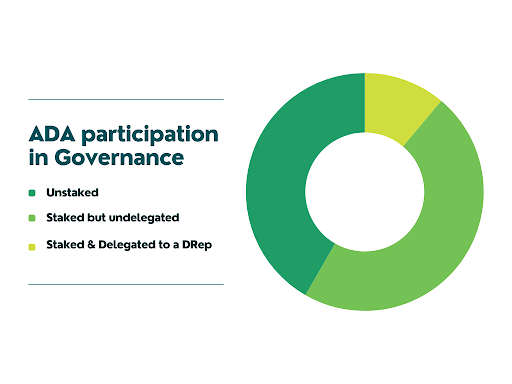While the constitutional conventions in Argentina and Kenya was the headline-grabbing news for Cardano in December 2024, the editorial pages and gossip columns were all about the Cardano Foundation. And by this, of course I mean all the scuttlebutt on X – including rants, comments, threads, live chats in public X spaces, and video retorts. The nature of that platform is that all its moments and insights are fleeting. Today’s article is here to capture a quick snapshot of the discussion, as well as a measured summary and reply from Cardano founder Charles Hoskinson.
First, what is the Cardano Foundation?
The CF was one of the three founding entities of the Cardano Blockchain. Its role is to advance the Cardano blockchain in the areas of operational resilience, education, and adoption. It was founded in 2016, not long before the launch of the chain itself in 2017.
There are two other founding entities of Cardano
Input Output Hong Kong (IOHK)
IOHK distinguished Cardano by adopting a scientific and peer-reviewed approach to blockchain development; they were primarily responsible for designing and building the blockchain code. One of their key achievements is the Ouroboros Proof-of-Stake Protocol: the first provably secure proof-of-stake consensus algorithm, which underpins Cardano’s energy-efficient operation.
Emurgo
Emurgo was the third founding entity, and their role was business development, investment and startup incubation, product development, and partnerships. Perhaps their most well-known contribution would be launching the Yoroi wallet.
The only constant in life is change - Heraclitus
Having three separate founding entities might sound complicated. The recent community drama seems to confirm – yep, it’s complicated. So why take the hard route? The decision to have three founding entities for Cardano points at an early commitment to decentralization: from it’s very inception, Cardano was built with decentralization in mind. No single person, entity, or voting block has ever been fully in charge. It’s a very different way to approach building and running global infrastructure. It introduces new opportunities - and new risks.
All three founding entities have evolved over the years. IOHK rebranded to IOG - Input Output Global. The updated name reflects their overall growth and broadening perspectives. Emurgo is a little hard to track - Yoroi is no longer a leading wallet, and their website doesn’t seem to run very deep. Maybe we’ll circle back to Emurgo at a later date! The Cardano Foundation has also changed. The changes are not recent but recent actions taken by the CF brought it to the front of everyone’s mind. The two notable moves that stirred up drama were:
- The CF proposed an alternative constitution, mere days before global delegates were set to travel and vote on a different draft.
- The CF voted in Project Catalyst with 182M ada; in this round, this made them an almost-ironclad kingmaker.
Reactions to both of these moves were heated, volatile, and layered.
Some saw the alternative constitution draft as an undermining of the process; the timing was wild, if nothing else. Meanwhile, the CF insisted that their intent was merely to contribute to meaningful discussion: https://cardanofoundation.org/blog/proposal-for-cardano-constitution.
For Project Catalyst, their vote was an explosive move, revealing that a single entity can, at this time, nearly fully control the outcome of 46.48 million ada in project funding. Others counter that every 1 ada has 1 vote. Perhaps the answer isn’t to stifle any given voice, but to work hard to bring more voices to the table.
On Twitter, @IOHK_Charles encapsulated the prevailing angry sentiments with a single tweet, pledging that he would not attend the annual Cardano Summit as long as the CF is hosting it. Things got even more spicy when he seemed to be offering a million personal dollars to get Cardano devs to travel to a hypothetical future event (but presumably not the Summit).
Cardano influencer @Cardano_Whale can usually be looked to for some balancing perspective. Here is a snippet:
“To me, given that we live in a 1 ADA 1 vote world, it’s desirable to have large ADA holders (be it founding entities or otherwise) with different backgrounds, outlooks, styles, that don’t always agree on the exact path forward. All this debate is a sign of a healthy decentralised ecosystem. It’s what I signed up for. I don’t want one influential group to decide the path forward for Cardano, either explicitly or implicitly.
After a few weeks of drama, Charles came around to a video recap, where he managed to explain his concerns about the CF without any drama. The following is a transcription of the video, edited for general readability. I think it’s important to capture these moments in writing now and then, so that they are searchable and scannable for those who are trying to learn about these events - both now and in the future!
2024 Reflections and a Vision for Cardano’s Future
“Hi, this is Charles Hoskinson broadcasting live from warm, sunny Colorado. Always warm, always sunny—sometimes Colorado. Today is December 19th, 2024. We are six days away from Christmas, so Merry Christmas and happy holidays to everyone listening. A good new year is coming. 2025 is going to be a much better year than 2024.
2024 was an amazing year. An enormous amount of stuff happened, and it was so cool to watch governance on paper become governance in reality. As many of you know, the month of December has been marked by some very deep and significant governance conversations, starting with the Constitutional Convention. There has also been some bleed-out from the Convention into an open debate about the actors in Cardano and the future of Cardano.
Now, low-value communication platforms like Twitter don’t really capture the nuance of arguments. People just take positions, bark at each other, and create drama. But what’s been happening recently is not a Charles Hoskinson, Input Output, versus Cardano Foundation debate. I know Rick McCracken posted a poll asking if people are tired of the drama between CF and IOG. There’s no drama on my side. It’s not a one-sided conversation; it’s an informational conversation. The “fight” started in 2021, and it was deferred until governance. This is simply informing you about something that occurred three years ago.
To reiterate: when I say the Swiss government replaced the board of the Cardano Foundation, that is a factually accurate statement. Michael Parsons, the original founder of the Cardano Foundation, started it as an Isle of Man entity. When he realized he couldn’t do what he wanted there, he created a new entity in Switzerland. Once funded, he started doing things that made people deeply uncomfortable. Social pressure from the Guardians of Cardano led to his departure. An interim board was appointed, including two Swiss members and three members from the core entities—Emurgo and Input Output.
The majority of that board worked tirelessly to stabilize the Foundation, which was in a very rough state. Eventually, they decided Switzerland was not a fit-for-purpose jurisdiction. The structure, called a “Stiftungs,” wasn’t designed for cryptocurrency foundations, and that’s on me for agreeing to use it. It was initially used for the Ethereum Foundation as a clever legal hack, but regulators never caught up to its use in decentralized ecosystems. For example, Abu Dhabi and Wyoming later created specific laws for blockchain foundations. The decision was made to move the entity to a different jurisdiction and restart as a member-based organization.
Conflict arose between the minority and majority of the board. The minority tried to liquidate the majority, leading to a lawsuit. The federal court ruled in favor of the majority. The Swiss regulator stepped in and appointed an administrator, Daniel Lao, who gave the board two choices: appoint replacements as a compromise or face liquidation. A compromise board was appointed in 2021, with the consent of both the minority and majority. This context is important because it shows that the Swiss government effectively appointed the board. The intent of the majority was to liquidate the Foundation and start anew as a member-based organization, but the regulator intervened. Fast forward to today, and this history has become relevant again because the Cardano Foundation has become an active participant in governance. They are voting on the Constitution and budget, and they have strong opinions on these matters.
Input Output has tried to work with the Foundation over the years, whether through discussions in Westminster, Colorado, or collaborations on initiatives like Intersect. However, there have been challenges, including differences in priorities and approaches. For example, the Foundation pursued its own initiatives, like Pragma, while we were building Intersect. Despite this, there’s no adversarial behavior with the entities involved, such as TX Pipe or DC Spark. We’ve even had productive conversations with some members about interoperability and formal specifications.
The main issue is governance. The Foundation’s board is self-perpetuating, with no mechanism for community oversight. They operate like a private company, controlling hundreds of millions of dollars without direct accountability to the community. This structure was never intended for a decentralized ecosystem and remains a concern.
2025 presents an opportunity to address these governance challenges through on-chain mechanisms. The Constitution and annual budget are critical steps toward a more inclusive and representative governance model. Input Output remains focused on building and growing the ecosystem, from integrating Bitcoin to launching Midnight, which promises to be the largest economic event in Cardano’s history.
At the end of the day, the strength of Cardano lies in its community. Every ADA holder has a voice in shaping the future, and participation in governance is essential. As we look to 2025, the focus must be on empowering builders, fostering innovation, and driving adoption. With the right decisions, the next year can set the stage for Cardano to thrive for decades to come.
Thank you for listening. This is the last statement I’ll make on this topic. Moving forward, let’s focus on the incredible opportunities ahead. Cheers.“
Conclusion
Something I think everyone agrees on is that in order to be a successful decentralized enterprise, Cardano needs more participation from ada holders in governance.
What would “good participation” look like, and how will we know when we get there?
Let’s consider voter turnout in global democracies. In the United States, local elections and midterm elections usually draw 40-50% of eligible dollar-holders to the polls. Presidential elections are stronger, pulling 60-70% of voters to the polls. For a fledgling democracy, any turnout exceeding 50% is considered encouraging. In a well-organized country like Sweden, voter turnout often hits 80%. In Australia, voting is mandatory, so that’s an interesting model.
How does this compare to Cardano? Of Cardano’s ~36B circulating supply, about ~21B is staked to any pool. Of that, about 3.8B is delegated to a DRep. That’s a bit less than ~20% of staked ada that is paying some fraction of attention to governance. I’m going to say I think that’s an ok number for a process that just started within the last several months, but let’s keep our eye on the ball: the number still needs to go up a lot!

When we consider the case of the undue influence of the CFs 182M ada in Project Catalyst, I’ll point again at the participation question. If we take the smallest number from the above paragraph - the 3.8B ada that is delegated to a DRep - the CF’s 182M is only about 5% of that voting power. Influential? Yes. But immovable? Not at all. We are at the dawn of Cardano governance. I’m excited to see what the new year brings in terms of more participation, more ideas, and more human power in our community!



No comments yet…